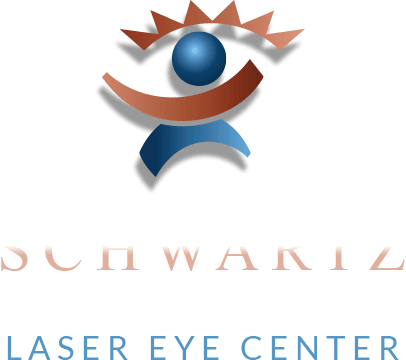Can Clear Lens Exchange Reduce the Need for Future Procedures?
Posted on July 15, 2025 by Ceatus Media Group - Clear Lens Exchange
 Clear lens exchange (CLE), also known as refractive lens exchange (RLE), is a vision correction procedure that replaces the eye’s natural lens with an artificial intraocular lens (IOL). It is most often recommended as an alternative to corneal refractive procedures such as LASIK or PRK. At Schwartz Laser Eye Center, serving Scottsdale, Glendale and Mesa, Arizona, CLE is part of a comprehensive refractive surgery offering.
Clear lens exchange (CLE), also known as refractive lens exchange (RLE), is a vision correction procedure that replaces the eye’s natural lens with an artificial intraocular lens (IOL). It is most often recommended as an alternative to corneal refractive procedures such as LASIK or PRK. At Schwartz Laser Eye Center, serving Scottsdale, Glendale and Mesa, Arizona, CLE is part of a comprehensive refractive surgery offering.
While CLE is primarily performed to reduce dependence on glasses or contact lenses, it may also offer an added benefit: helping to limit the need for future lens-related procedures. Here, our team discusses some ways that CLE supports long-term vision stability.
The Dual Role of Clear Lens Exchange
CLE is designed to address refractive errors such as farsightedness, nearsightedness, and presbyopia by removing the natural lens and implanting a clear artificial lens. Unlike laser-based procedures that reshape the cornea, CLE modifies the internal optical system of the eye. This approach allows for a high degree of visual correction and may be suitable for patients with high prescriptions or age-related lens changes.
Importantly, because CLE involves removal of the natural lens, it also eliminates the possibility of cataract development in the future. Cataracts occur when the natural lens becomes cloudy with age, but that cannot happen once the lens has been replaced. This aspect of CLE may limit the need for future lens-based procedures, including cataract extraction.
Minimizing Future Surgical Intervention
Patients who undergo CLE often benefit from long-term visual stability, especially when combined with the selection of an appropriate intraocular lens (IOL). The lens chosen during surgery is matched to the patient’s refractive measurements, lifestyle, and ocular anatomy. For many, this approach may reduce the likelihood of needing additional surgical intervention related to lens clarity or focus.
While CLE does not prevent all age-related changes in vision, such as those that occur at the retinal or corneal level, it does proactively address the most common internal optical changes associated with aging. This may help patients maintain clearer, more consistent vision for years after the procedure.
Comprehensive Consultation and Planning
At Schwartz Laser Eye Center, our eye doctors use a thorough preoperative evaluation process (including biometry, corneal imaging, and ocular health assessments) to determine whether CLE is appropriate. This individualized approach ensures each treatment recommendation aligns with both current visual needs and long-term eye health considerations.
If you are exploring vision correction options and want to understand whether clear lens exchange may help support long-term vision stability, contact Schwartz Laser Eye Center in Scottsdale, Glendale, and Mesa, AZ. Our ophthalmologists Dr. Jay Schwartz and Dr. Orry Birdsong offer experienced clinical insight to support every patient’s visual goals. Call 1-888-553-3937 for a consultation.



